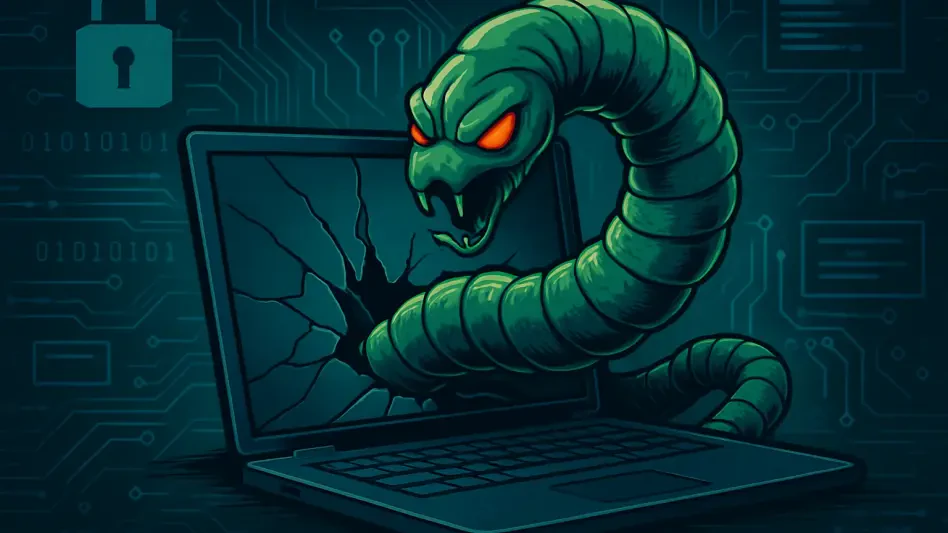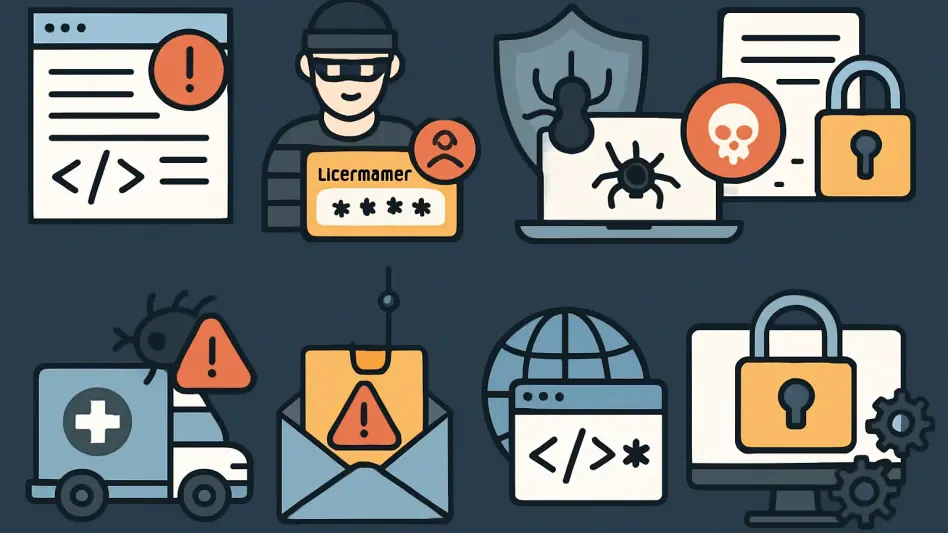In the realm of cybersecurity, the relentless pursuit to mitigate sophisticated threats continues as adversaries deploy increasingly ingenious methods. Among these, a new phishing campaign has emerged, primarily targeting Microsoft Outlook users. This particular threat has garnered attention due to its advanced execution methods and the tools that facilitate such operations. Devised using the W3LL Phishing Kit, this campaign is designed to harvest valuable credentials through phishing-as-a-service offerings. To be successful, it employs adversary-in-the-middle techniques capable of circumventing multi-factor authentication protocols. Consequently, this poses a significant challenge in the realm of digital security, amplifying the urgency for enhanced vigilance and responsive strategies.
Anatomy of the W3LL Phishing Kit
Intricacies of Phishing-as-a-Service
The deployment of the W3LL Phishing Kit marks a significant evolution in cybercriminal strategies, where the concept of phishing-as-a-service (PhaaS) enables attackers to craft highly customized phishing campaigns with relative ease. By providing a framework that allows for precise tailoring, these tools offer attackers a means to refine their malicious ventures by mimicking legitimate interfaces, such as Adobe Shared Files. This level of customization enhances the likelihood of success in deceiving recipients into unwittingly divulging their credentials. With each interaction, sensitive login details are transmitted to attacker-controlled destinations, providing a streamlined avenue for data theft.
Additionally, the W3LL Store, an integral component of this framework, exemplifies the commodification of cybersecurity threats by offering a marketplace where attackers can enhance their phishing tools. Opportunities for customization extend to visual design and functionality modifications, making it challenging for users to discern legitimate platforms from deceiving replicas. The meticulously crafted emails that mimic trusted services serve as harbingers of this threat. Unveiling emails bearing familiar logos and layouts, these campaigns further entrench the efficiency of their subterfuge by passing superficial scrutiny from unsuspecting users.
Techniques for Bypassing Security Measures
The sophistication of the campaign transcends the mere phishing attempt, incorporating methods to sidestep usual security measures. Through adversary-in-the-middle techniques, malicious actors effectively intercept session cookies, allowing them to bypass multi-factor authentication (MFA)—a defense once considered formidable. This capability is rooted in the campaign’s strategic deployment of expertly designed phishing pages that resemble actual login portals. Such crafting not only relies on the surface similarity but also on backend sophistication that complicates detection efforts.
Efforts by analysis groups, such as Hunt.io, elucidate a carefully curated setup involving open directories with suspicious files intended for illicit capture of credentials. The conspicuous presence of directory labels, like “OV6,” indicates the strategic control elements embedded within the W3LL kit’s operational structure. This setup reflects an orchestrated effort to subvert not just user trust but also institutional defense mechanisms, emphasizing the need for security protocols that anticipate and neutralize evolving threats.
Defensive Measures Against Evolving Threats
The Role of Advanced Techniques
In response to such sophisticated threats, there arises a critical requirement for security operations center (SOC) teams to harness cutting-edge tools and tactics capable of proactive threat identification and response. Leveraging deep threat analysis tools and advanced security architectures becomes vital in thwarting these carefully orchestrated campaigns. The elucidation of network indicators, such as IP addresses like 192.3.137[.]252:443 and domains like teffcopipe[.]com, underlines the scope and organizational rigor of the operation. Effective defenses must thus incorporate strategies both to recognize these indicators swiftly and to implement preemptive countermeasures.
Furthermore, ionCube encryption techniques employed by the W3LL kit add another layer of complexity, necessitating that security professionals maintain constant vigilance and adaptability. These encryption methods shield PHP code from external scrutiny or decryption attempts, posing a formidable challenge for those endeavoring to dissect the campaign’s infrastructure. Consequently, security approaches must transcend traditional paradigms, incorporating proactive adaptations to emergent technical obfuscations and ensuring resilient cyber defense systems.
Shaping a Forward-Looking Security Culture
In the sphere of cybersecurity resilience, fostering a proactive security culture within organizations constitutes an essential facet of safeguarding sensitive digital assets. Training and awareness campaigns, coupled with robust threat intelligence sharing, equip users to identify and thwart potential phishing attempts. Collaborations across industries further strengthen this adaptive security posture, promoting a comprehensive understanding of systemic vulnerabilities and emerging threat vectors.
Ultimately, the significance of preparedness cannot be overstated, as attackers continue to innovate and refine their techniques. Establishing enduring partnerships within the cybersecurity community ensures that intelligence gathering and response strategies evolve in tandem with attacks. In doing so, organizations not only protect themselves from immediate threats but also contribute to a fortified cybersecurity ecosystem poised to manage emerging challenges.
Navigating Future Cybersecurity Challenges
In the evolving landscape of cybersecurity, the ongoing battle to counter sophisticated threats remains vital as attackers unveil increasingly clever techniques. A recent phishing campaign has caught the spotlight, particularly targeting Microsoft Outlook users. This threat is notable for its advanced execution strategies and the specialized tools that support its operations. Crafted with the W3LL Phishing Kit, the campaign is engineered to steal valuable user credentials via phishing-as-a-service models. Its success hinges on employing adversary-in-the-middle techniques, which can bypass even robust multi-factor authentication systems. As a result, this challenge in digital security grows, underscoring the urgency for heightened vigilance and effective countermeasures. Organizations must not only fortify their technological defenses but also prioritize educating their workforce about emerging threats. This proactive approach is essential to mitigate risks and safeguard critical information in today’s interconnected digital environment.








